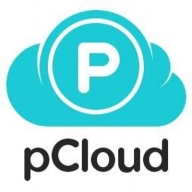

pCloud and AWS Elastic Disaster Recovery compete in data storage and disaster recovery. AWS Elastic Disaster Recovery appears to hold the advantage with its advanced disaster recovery capabilities that justify its higher cost.
Features: pCloud offers secure cloud storage with file sharing, backup, and a virtual hard drive that doesn't take up local space. Users enjoy a built-in music player and the ability to brand download links. AWS Elastic Disaster Recovery provides rapid restoration, scalability, and instant block replication for critical workloads, along with ease of use and reliable continuous data protection.
Room for Improvement: pCloud could enhance integration with more third-party apps, improve upload speeds, and offer more collaborative tools for business users. AWS Elastic Disaster Recovery might benefit from a simplified initial setup process, reduced complexity in feature access, and additional support for non-technical users to bridge the expertise gap.
Ease of Deployment and Customer Service: pCloud offers a straightforward deployment with responsive customer support, making it ideal for users with limited technical knowledge. AWS Elastic Disaster Recovery involves a more complex deployment due to its advanced features, requiring robust customer service that efficiently assists users with technical expertise.
Pricing and ROI: pCloud's cost-effective model includes a lifetime subscription, offering 500 GB for $125 and 2 TB for $250, ensuring good ROI for basic storage needs. AWS Elastic Disaster Recovery, while having a higher initial cost, justifies its pricing with substantial ROI through robust disaster recovery features, benefiting businesses that prioritize data availability.

CloudEndure Disaster Recovery enables real-time replication and rapid recovery to enhance organizational resilience. Key features include block-level data replication, ease of use, cost-effectiveness, and automated recovery orchestration. Users benefit from increased efficiency, improved workflows, and enhanced data management, significantly improving organizational performance and business continuity.
pCloud is a personal cloud space where you can store all your files and folders. It has a user-friendly interface that clearly shows where everything is located and what it does. The software is available for almost any devices and platforms – iOS and Android devices, Mac, Windows, and Linux. By installing pCloud on your computer (through its desktop application pCloud Drive), the app creates a secure virtual drive which expands your local storage space. Every change you make in your pCloud can be seen immediately on your computer, phone or tablet. All your devices are instantly synchronized and you have direct file access to any update you make.
We monitor all Cloud Backup reviews to prevent fraudulent reviews and keep review quality high. We do not post reviews by company employees or direct competitors. We validate each review for authenticity via cross-reference with LinkedIn, and personal follow-up with the reviewer when necessary.